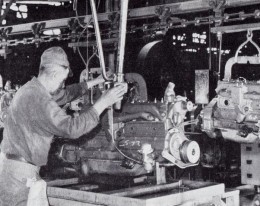Some Outsourced Jobs Returning to the U.S.

Sirkin says at least 200 companies have already returned, and there’s been a dramatic jump recently in the number of companies saying they’re seriously thinking about it. Sirkin says a huge factor has been rising wages overseas. Pay in China has risen at least 15 percent annually for the past few years. Wages in China are still comparatively low compared with the U.S., but there are other important factors.
“You went to China because it was just so cheap you couldn’t help it,” he says. “But if you’ve got the engineers and people in the U.S., and the customer base in the U.S., you’d like to be close to the customer. It gives you a shorter supply chain.”
Also, the cost of shipping has shot up, while domestic energy prices are low.
If this trend continues, Sirkin believes 20 to 25 percent of products that were sent offshore will eventually return to the U.S.
American companies have sent manufacturing work to places like China because it was cheaper to produce goods in places with very low wages, but increases in pay are sending previously outsourced work back home. This is known as “reshoring.” There is still the issue of finding and training skilled workers to do the jobs, and some examples of reshoring have shown limited gains in job growth: When Whirlpool decided to assemble hand mixers once assembled in China in its Greenville, Ohio factory, the move resulted in the creation of just 25 jobs. Other reshoring efforts have created a few hundred jobs. Still, some job creation is better than no job creation.
Photo: Alden Jewell
Support The Billfold
The Billfold continues to exist thanks to support from our readers. Help us continue to do our work by making a monthly pledge on Patreon or a one-time-only contribution through PayPal.
Comments